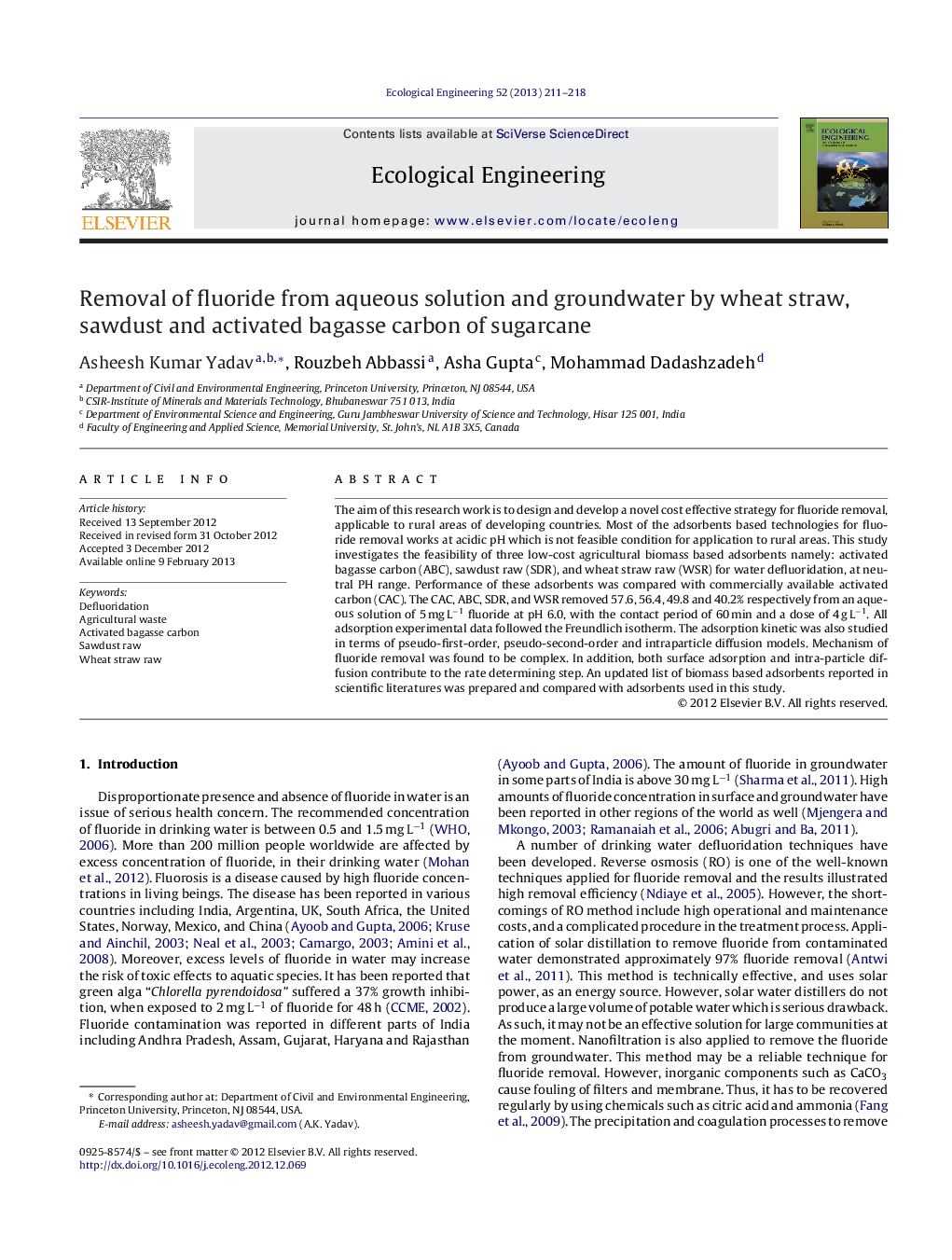| Article ID | Journal | Published Year | Pages | File Type |
|---|---|---|---|---|
| 4389755 | Ecological Engineering | 2013 | 8 Pages |
The aim of this research work is to design and develop a novel cost effective strategy for fluoride removal, applicable to rural areas of developing countries. Most of the adsorbents based technologies for fluoride removal works at acidic pH which is not feasible condition for application to rural areas. This study investigates the feasibility of three low-cost agricultural biomass based adsorbents namely: activated bagasse carbon (ABC), sawdust raw (SDR), and wheat straw raw (WSR) for water defluoridation, at neutral PH range. Performance of these adsorbents was compared with commercially available activated carbon (CAC). The CAC, ABC, SDR, and WSR removed 57.6, 56.4, 49.8 and 40.2% respectively from an aqueous solution of 5 mg L−1 fluoride at pH 6.0, with the contact period of 60 min and a dose of 4 g L−1. All adsorption experimental data followed the Freundlich isotherm. The adsorption kinetic was also studied in terms of pseudo-first-order, pseudo-second-order and intraparticle diffusion models. Mechanism of fluoride removal was found to be complex. In addition, both surface adsorption and intra-particle diffusion contribute to the rate determining step. An updated list of biomass based adsorbents reported in scientific literatures was prepared and compared with adsorbents used in this study.
► Agricultural biomass based adsorbents with minimal processing. ► Efficient at neutral pH range and suitable for defluoridation of water in rural area. ► The kinetic data were found to fit very well the pseudo second-order kinetic model. ► Surface adsorption as well as intra-particle diffusion contributes to fluoride removal. ► Significant fluoride removal was achieved from real groundwater.
